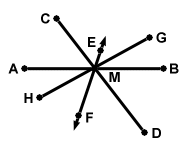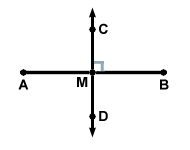Please wait while we process your payment
If you don't see it, please check your spam folder. Sometimes it can end up there.
If you don't see it, please check your spam folder. Sometimes it can end up there.
Please wait while we process your payment

By signing up you agree to our terms and privacy policy.
Don’t have an account? Subscribe now
Create Your Account
Sign up for your FREE 7-day trial
By signing up you agree to our terms and privacy policy.
Already have an account? Log in
Your Email
Choose Your Plan
Individual
Group Discount
Save over 50% with a SparkNotes PLUS Annual Plan!
 payment page
payment page
Purchasing SparkNotes PLUS for a group?
Get Annual Plans at a discount when you buy 2 or more!
Price
$24.99 $18.74 /subscription + tax
Subtotal $37.48 + tax
Save 25% on 2-49 accounts
Save 30% on 50-99 accounts
Want 100 or more? Contact us for a customized plan.
 payment page
payment page
Your Plan
Payment Details
Payment Summary
SparkNotes Plus
You'll be billed after your free trial ends.
7-Day Free Trial
Not Applicable
Renews July 18, 2025 July 11, 2025
Discounts (applied to next billing)
DUE NOW
US $0.00
SNPLUSROCKS20 | 20% Discount
This is not a valid promo code.
Discount Code (one code per order)
SparkNotes PLUS Annual Plan - Group Discount
Qty: 00
SparkNotes Plus subscription is $4.99/month or $24.99/year as selected above. The free trial period is the first 7 days of your subscription. TO CANCEL YOUR SUBSCRIPTION AND AVOID BEING CHARGED, YOU MUST CANCEL BEFORE THE END OF THE FREE TRIAL PERIOD. You may cancel your subscription on your Subscription and Billing page or contact Customer Support at custserv@bn.com. Your subscription will continue automatically once the free trial period is over. Free trial is available to new customers only.
Choose Your Plan
This site is protected by reCAPTCHA and the Google Privacy Policy and Terms of Service apply.
For the next 7 days, you'll have access to awesome PLUS stuff like AP English test prep, No Fear Shakespeare translations and audio, a note-taking tool, personalized dashboard, & much more!
You’ve successfully purchased a group discount. Your group members can use the joining link below to redeem their group membership. You'll also receive an email with the link.
Members will be prompted to log in or create an account to redeem their group membership.
Thanks for creating a SparkNotes account! Continue to start your free trial.
We're sorry, we could not create your account. SparkNotes PLUS is not available in your country. See what countries we’re in.
There was an error creating your account. Please check your payment details and try again.
Please wait while we process your payment

Your PLUS subscription has expired
Please wait while we process your payment
Please wait while we process your payment

Dividing Angles and Segments
Angles can be divided just like ordinary numbers. An angle can only be
divided by a ray on the interior of the
angle, though. Such a ray that divides an angle into two equal angles is called
an angle bisector. Likewise, two rays that divide an angle into three
congruent angles are called angle trisectors.

With angle bisectors and trisectors, it also holds true that any of the new angles created by the bisector or trisector is equal to exactly one-half or one-third of the original angle, depending on whether the angle has been bisected or trisected.
A segment is divided into two equal segments
only when a line or segment passes through
the midpoint of the original segment. The midpoint of a segment is the
point lying in the segment that is exactly
halfway from each endpoint of the segment.

When a line or segment passes through the midpoint of another segment, that line
or segment is a bisector of the other segment. There are an infinite number
of bisectors for every segment, depending on the angle at which the incoming
segment or line bisects the other segment.

If a bisector is perpendicular to the segment it bisects, it is called the
perpendicular bisector of that segment. Because there exists only one line
perpendicular to a line at a given point, a segment has only one perpendicular
bisector: the perpendicular line that passes through the midpoint of the
segment.

Just as there are bisectors for segments, there are trisectors, too. Segment trisectors divide a segment into three equal segments.
Please wait while we process your payment

